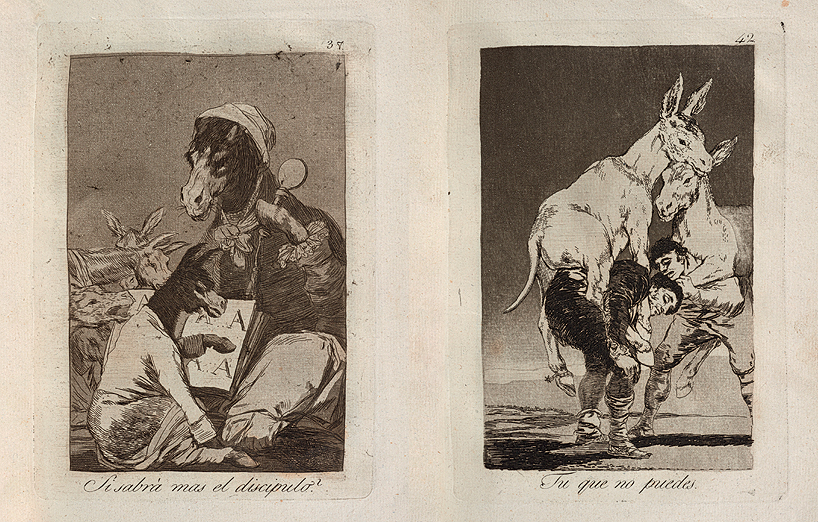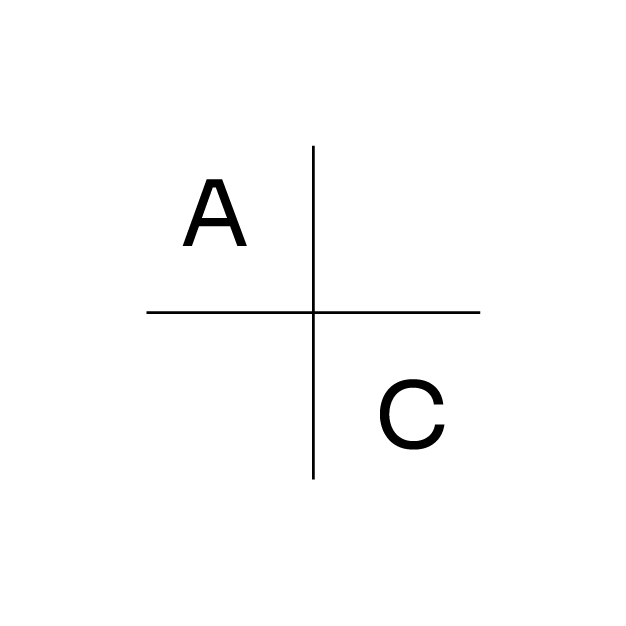EXHIBITION TRASMUNDO DE GOYA I PEDRO G. ROMERO

January 19 – March 15, 2024
Opening: Friday, January 19, at 8 p.m.
Pedro G. Romero presents this Friday at the CICUS together with the editors of Media Vaca: Trasmundo de Goya, an exhibition that highlights the relevance of the Aragonese painter’s work through the participation of more than thirty contemporary artists who find inspiration in Goya’s illustrations.
In 1963, with the edition of Edith Helman’s Trasmundo de Goya, the interpretations of Francisco de Goya, author of the Caprichos, Desastres, Tauromaquias and Disparates, singular works that announce modernity with a complexity that, basically, has always been simplified in the name of technique, progress and the future. Helman helps us to read Goya’s illustrations -understanding here illustration with its lowercase letters- in relation to the authors with whom he shared something more than the same historical time. Intellectuals and friends such as Jovellanos, Cadalso and Moratín, Tzvetan Todorov will come later to tell us about Goya’s superiority of thought, even above Goethe or Rousseau; Victor I. Stoichika to show us how Goya’s work is a work of art. Stoichika to show us how Goya’s philosophy broadens the very field of what we consider ideas or László Földényi to make us understand, from Goya’s own legacy, why his work escapes what are traditionally called paradoxes or contradictions of the Enlightenment, written, now yes, with capital letters.
Taking advantage of the current edition of Media Vaca, in the same promotion, after the editions of Revista de Occidente in 1963 and Alianza Forma in 1983, with an unpublished deployment of images and complements, we open an exciting cabinet of readings, always against the grain, of those ways of making Goya. Interpretations, yes, but, decidedly, and following Susan Sontag, in an exercise against interpretation itself. There are the many historical versions of a costumbrista Goya, a moralistic Goya, even a political Goya. Also the productive delirium with which Goya drives the engraver De la Herrán to madness and the sculptor Oteiza to lucidity. A last point vindicates the generation of Goya’s authors, truly expelled from the academic artistic canon and from the memory of our modernity -and perhaps one of the paradoxical reasons for our current provincialism-, artists considered “minor” such as Rosario Weiss, Francisco Lameyer, Jose Zapata, Eugenio Lucas Velazquez, the Becquer family or Leonardo Alenza.
A group of contemporary artists dedicate their works to the Caprichos de Alenza: Efrén Álvarez, Nathalie Bellón, Misha Bies Golas, Ricardo Cadenas, Salomé del Campo, Daniel Carvajal, Mauro Cerqueira, Carolina Cordeiro, Silvia Cosio, Carla Filipe, Antonio Gagliano, Curro González, Federico Gúzman, Patricio Hidalgo, Victor Jaenada, Julio Jara, Mim Juncá, Abraham Lacalle, Lola Lasurt, Chema López, Gloria Martín, Xisco Mensua, Luis Navarro, Elvira Pujol, Pedro G. Romero, Inmaculada Salinas, André Sousa, Joan Vilapuig, Oriol Vilapuig.
A “minor” exhibition, no doubt, in the sense that Gilles Deleuze and Félix Guattari gave to the word: on the one hand, to deterritorialize, on the other, to give voice to the community.
